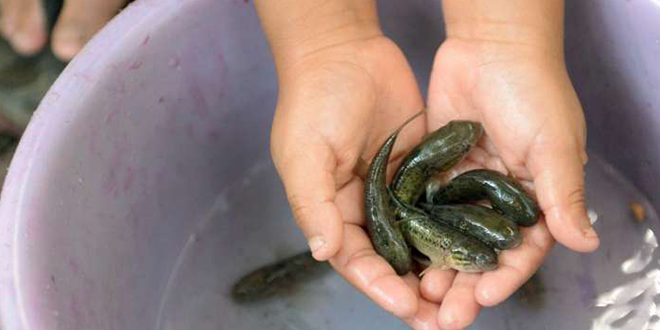
Fish, frogs and toads are now warriors in Zika battle
With larva-chomping fish and genetically modified insects, Latin Americans are deploying legions of little helpers to destroy mosquitoes carrying the Zika virus in the world’s latest mass health scare.
Scientists are devising numerous ways to try and stamp out the mosquitoes whose bites spread the virus, which they suspect can cause brain damage in babies and paralysis in adults.
Some want to wipe out baby mosquito larvae in standing water where the insects breed. Others propose to zap the male mosquitoes’ privates with radiation to make them impotent.
Still others just want a plain old toad in their home to gobble any mosquitoes that buzz in.
In San Diego Beach on the Pacific coast of El Salvador, fishermen use fat sleeper fish to devour the mosquitoes while they are still wingless larvae.
“They are true warriors in the fight against Zika. They eat all the mosquito larvae in the barrels where we store our water,” said Mr Rafael Gonzalez, 30, a local fisherman.
Mr Marielos Sosa, the initiative’s organiser, said “everyone helps out.”
“The young people help catch the fish in the estuary. The adults keep an eye on the water stocks in their homes.” This prevents the need to fumigate homes and water storage sites, as many towns are doing.
“Fumigation can be effective in reducing the adult mosquito population, but it is not as effective against other forms of the mosquito such as larvae,” said Ms Carissa Etienne, head of the Pan American Health Organisation.
Fumigation by workers in overalls spraying smoke “has a political impact because it is visually striking, but we are not sure whether it is really effective in fighting the Aedes Aegypti mosquito,” the species that carries Zika, she said.
Before Zika hit the region, Latin American countries had developed various techniques for fighting these mosquitoes, which also carry fever such as dengue and chikungunya.
In Peru, biologist Palmira Ventosilla in 1992 devised an organic insecticide made from coco, yucca, asparagus and potatoes – a recipe endorsed by the World Health Organisation.
Natural so-called biolarvicides “are cheap and non-toxic and can be used by the public,” Dr Ventosilla told AFP.
The treatment devised by her team at Peru’s Cayetano Heredia University uses the vegetable mixture to nourish and multiply a bacteria that destroys the larvae.
A kit developed by the university including a sprinkler to apply the insecticide costs about a dollar and can kill off larvae in 10 minutes, she said.
“It is a simple method that we are showing to the public so they can produce it themselves.”
In neighbouring Colombia, the second worst-hit country in the Zika outbreak after Brazil, scientists are fighting mosquitoes with mosquitoes.
Tropical disease specialists at Antioquia University are trying to spread among mosquitoes a bacteria known as Wolbachia, which blocks their ability to pass on disease to humans.
Source: AFP

